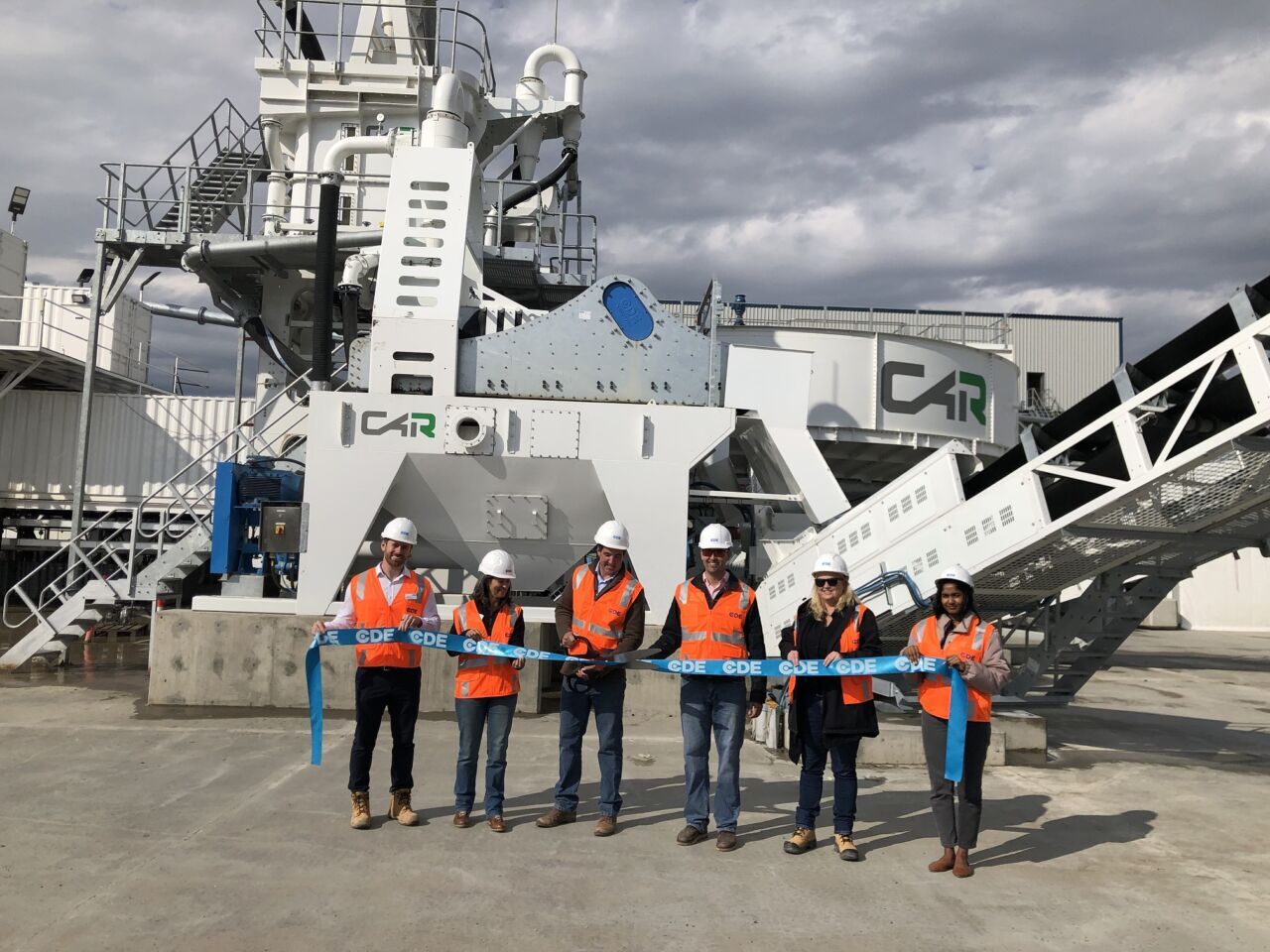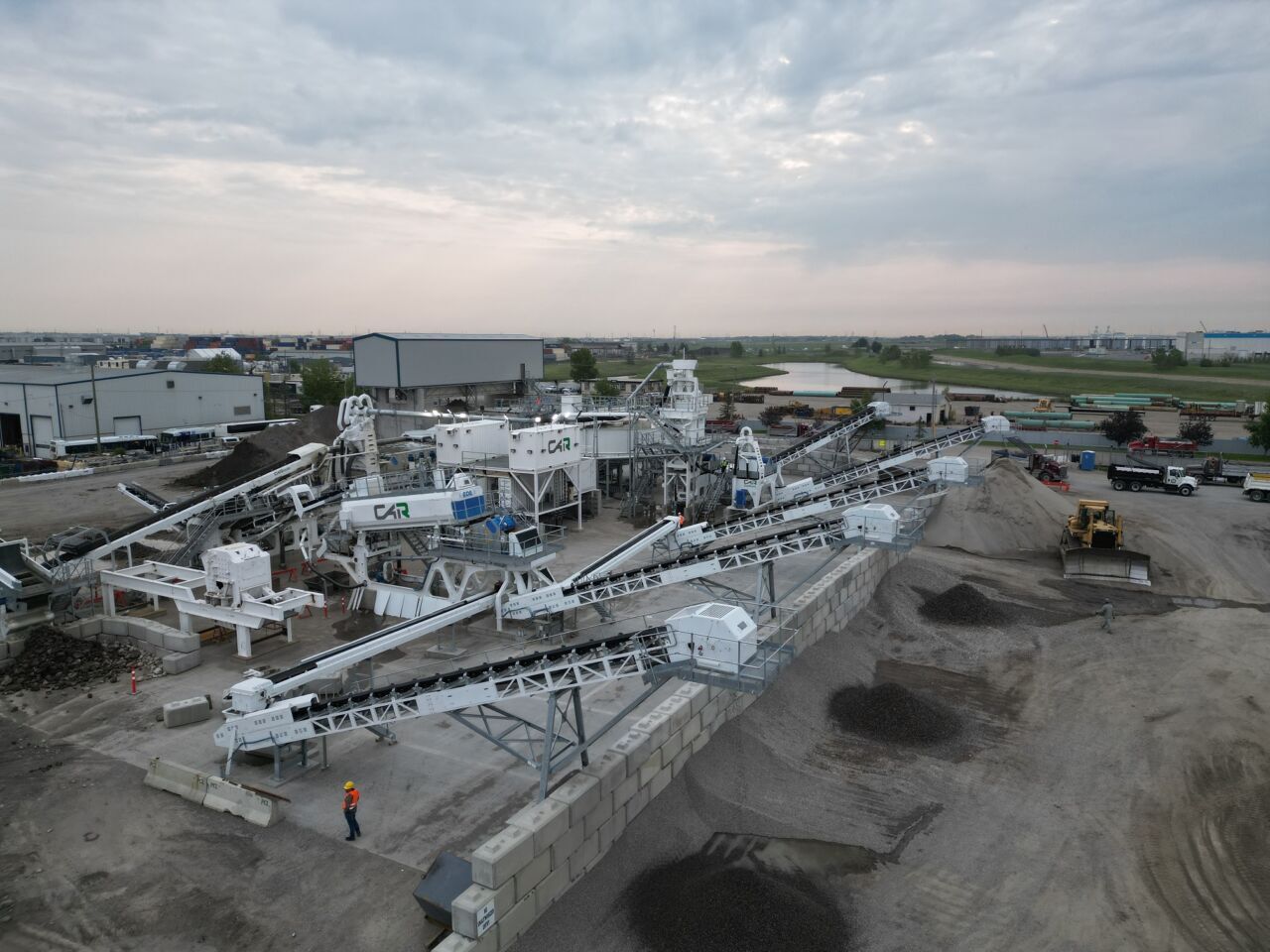CDE and Calgary Aggregate Recycling recently hosted an open house event to showcase the company’s new 250 tons per hour (tph) contaminated soils and construction, demolition and excavation (C,D&E) waste wash plant, the largest commissioned by CDE in Canada to date.

The event was attended by around 100 industry representatives who gathered to learn more about CDE’s innovative recycling process and the positive impact its technology is having on resource availability in the Calgary and Alberta areas.
“This new waste recycling plant – the impact it is having, and will have – is a real showcase of the positive economic and environmental change that can be achieved through collaboration with likeminded partners. The largest such plant we have ever commissioned in Canada, it exemplifies decades of expertise and engineering excellence in this space and highlights the potential of available waste streams as a sustainable supply line to the construction industry.”
said CDE’s Business Development Manager for Canada, Adrian Convery.
Processing up to 250tph of raw feed material, the CDE solution is transforming contaminated soils and C,D&E waste into a high value suite of construction products, helping CAR to generate additional revenue while simultaneously diverting significant tonnages of material from landfill.
Among the outputs are 0-1mm fine and 0-4mm coarse sands as well as 4-10mm undersize, 10-20mm midsize, plus 20-40mm, 40-100mm and >100mm oversize aggregates.
Justin Riemer, Chief Executive Officer of Emissions Reduction Alberta (ERA), the body tasked with delivering on the province’s environmental and economic goals, said the organisation is excited by its investment in CAR’s new facility.
“A more sustainable, diversified provincial economy requires using our resources more wisely; we need to think about waste as a resource rather than a cost. The technology behind this will reduce waste, reduce emissions, and upcycle what would otherwise be destined for landfill.”
said Riemer.

In addition to landfill diversion, the plant is expected to help reduce carbon emissions in Alberta by an estimated 22,567 tons annually.
“We believe there’s lots more untapped potential in improved end-of-life concrete management in the C&D space and we hope to continue to invest in this area in the future. The concrete sector here in Alberta has been a leader of decarbonization and circular economy technologies, and this new facility is further evidence of that.”
On October 3rd, CDE will host a follow-up virtual tour of the new plant, guiding audiences through each stage of the recycling process, from the feed material and washing process to the seven outputs currently being produced.
Attendees will also have the opportunity to put questions to CDE experts and learn more about the opportunities available in transforming contaminated soils and C,D&E waste to in-spec sand and aggregate products.
 Copyright 2020 All rights reserved.
Copyright 2020 All rights reserved.